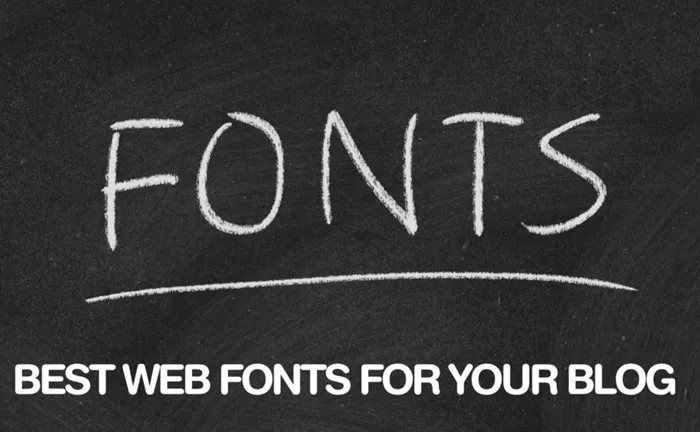Choosing the right font for your blog is a critical decision that can significantly impact how readers perceive your content and engage with it. Fonts are not just about aesthetics; they influence readability, mood, and overall user experience. In this article, we will explore the essential aspects of font selection for blogging, the key types of fonts, and provide detailed recommendations to help you choose the best one for your blog.
Why Font Choice Matters in Blogging
Fonts convey emotions and set the tone for your blog. They are as much a part of your branding as your logo or color scheme. A well-chosen font enhances readability and keeps readers engaged, while a poorly chosen one can deter visitors from staying on your page. Here’s why font choice is crucial:
Readability: A clear and legible font ensures that readers can easily consume your content without straining their eyes.
Aesthetic Appeal: Fonts contribute to the overall look and feel of your blog, aligning with your brand identity.
Accessibility: Some fonts are more inclusive and easier for people with visual impairments to read.
Emotional Connection: Different fonts evoke different emotions, helping you connect with your audience on a deeper level.
Key Categories of Fonts
Fonts fall into four primary categories, each with its unique characteristics and suitability for blogging:
1. Serif Fonts
Serif fonts are classic and traditional. They have small lines, or “serifs,” at the ends of their letters. Examples include Times New Roman, Georgia, and Baskerville.
- Best For: Professional, academic, or literary blogs.
- Pros: Elegant, timeless, and easy to read in long-form content.
- Cons: May appear outdated or formal for casual blogs.
2. Sans-Serif Fonts
Sans-serif fonts lack the decorative lines of serif fonts, giving them a clean and modern look. Examples include Arial, Helvetica, and Open Sans.
- Best For: Tech, lifestyle, and minimalist blogs.
- Pros: Crisp, contemporary, and versatile.
- Cons: May lack the warmth or personality of serif fonts.
3. Script Fonts
Script fonts mimic cursive handwriting and are often decorative. Examples include Pacifico and Dancing Script.
- Best For: Creative, artistic, or personal blogs.
- Pros: Unique and expressive.
- Cons: Difficult to read in long paragraphs or small sizes.
4. Display Fonts
Display fonts are bold, attention-grabbing, and designed for headings or titles. Examples include Lobster and Impact.
- Best For: Niche blogs requiring dramatic flair.
- Pros: Visually striking.
- Cons: Not suitable for body text.
Factors to Consider When Choosing a Font for Blogging
Selecting the best font for your blog involves considering several key factors:
1. Readability
Your primary goal is to make the content easily readable. Choose fonts with clear letterforms and adequate spacing.
2. Brand Identity
The font should reflect your blog’s personality. A tech blog might use a clean sans-serif font, while a creative blog might lean towards a decorative script.
3. Mobile-Friendliness
Ensure that the font is legible on various screen sizes, especially smartphones and tablets, as mobile users make up a significant portion of web traffic.
4. Compatibility
Check if the font works seamlessly across different web browsers and platforms.
5. Licensing
Ensure that the font is either free for commercial use or properly licensed to avoid legal issues.
Recommended Fonts for Blogging
1. Google Fonts
Google Fonts offers a vast library of free, web-safe fonts. Here are some top recommendations:
- Roboto: A versatile sans-serif font, perfect for tech and minimalist blogs.
- Lora: A serif font with a modern touch, ideal for literary blogs.
- Montserrat: A clean sans-serif font with a friendly vibe, great for lifestyle blogs.
2. Paid Fonts
For those looking to stand out, paid fonts offer exclusivity and unique designs. Examples include:
- Proxima Nova: A premium sans-serif font known for its clean and professional look.
- Georgia Pro: An enhanced version of the classic Georgia, suitable for professional blogs.
Font Pairing Tips for Blogging
Combining fonts can create visual hierarchy and improve readability. Here’s how to do it effectively:
Stick to Two Fonts: Use one font for headings and another for body text.
Contrast Wisely: Pair a serif font with a sans-serif font for a balanced look.
Match the Tone: Ensure both fonts align with your blog’s personality.
Examples of great font pairings:
- Roboto (Body) + Playfair Display (Headings)
- Lora (Body) + Montserrat (Headings)
Mistakes to Avoid When Choosing Fonts
Overloading with Fancy Fonts: Avoid using too many decorative fonts, as they can distract readers.
Ignoring Readability: Do not prioritize aesthetics over readability, especially for body text.
Inconsistent Usage: Stick to a consistent font scheme across your blog for a cohesive look.
Conclusion
The best font for blogging ultimately depends on your blog’s theme, audience, and branding. Whether you opt for the classic elegance of a serif font or the modern simplicity of a sans-serif font, the key is to prioritize readability and alignment with your blog’s identity. By thoughtfully selecting fonts and pairing them effectively, you can enhance user experience and make a lasting impression on your readers.
Start experimenting with fonts today and transform your blog into a visually compelling and engaging space!
Related Topics
- How Can You Use Evernote for Blogging?
- How Can You Use Notion For Blogging?
- How Can Scrivener Help With Blogging?

